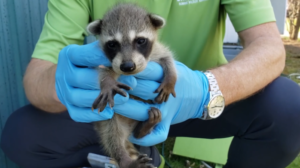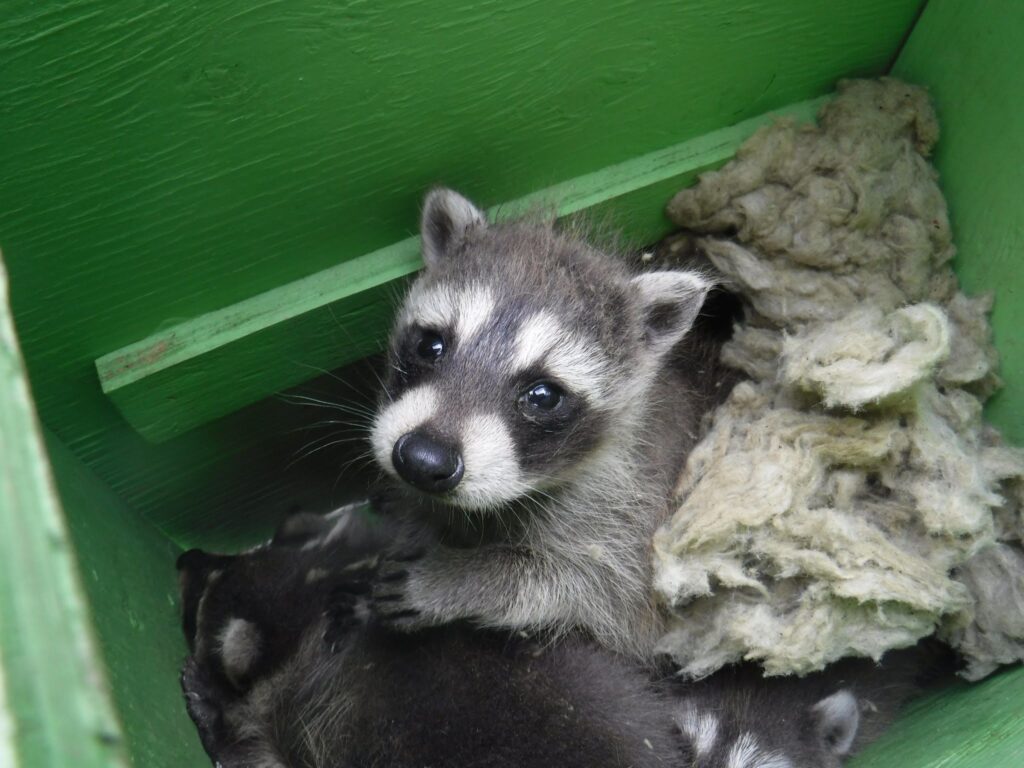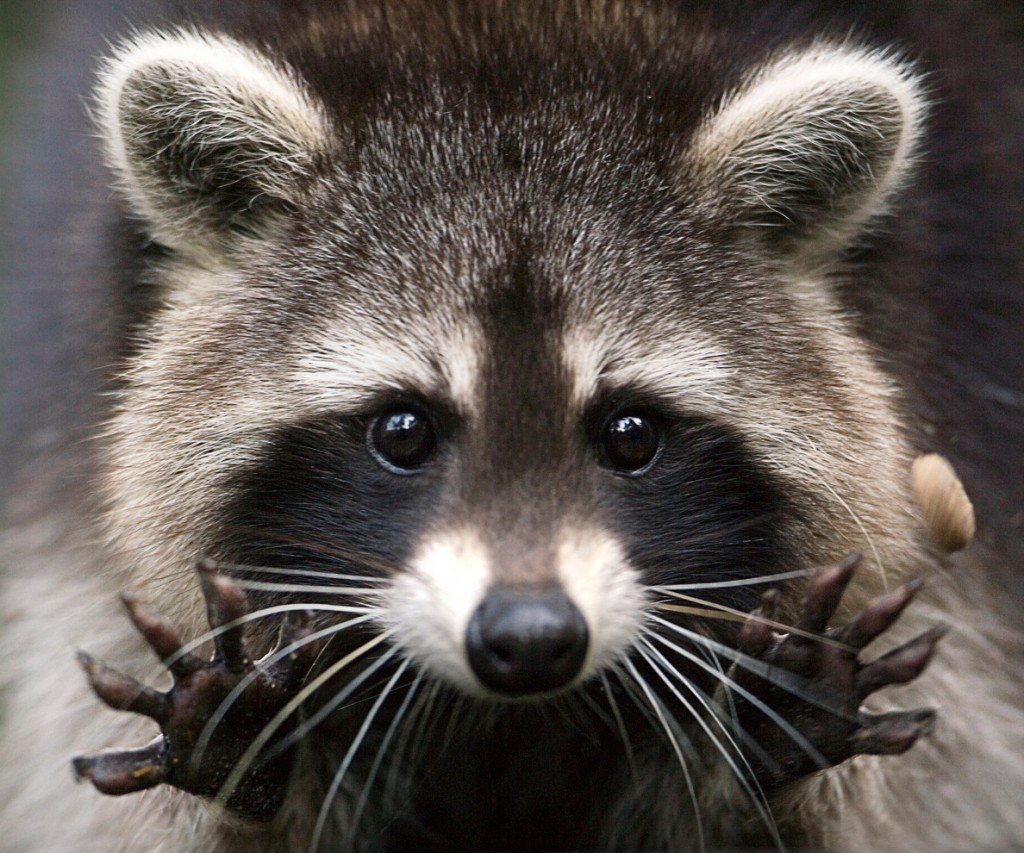Of all the animals that live near people and sometimes take advantage of human living spaces, raccoons are one of the most adaptive and opportunistic creatures. They like living in or near human habitations because it is easier for them to find food, whether they help themselves to your pet's kibble or dig through your trash cans. With their strong, clever and dexterous paws, they may be able to get into areas of your home that you thought were utterly secure, such as your attic or crawlspace. At Skedaddle Humane Wildlife Control, we have a variety of different strategies when it comes to how to get rid of raccoons safely, as well as some helpful information about how these animals use their sense of touch in and around your home.
What Makes Raccoon Hands Different?
While other mammals do have paws that enable them to hold food and make nests, A raccoon's hands are quite unique and especially dexterous. These mammals use their hands for a variety of tasks, including:
-
Wetting food and other objects to gauge their usefulness
-
Climbing
-
Opening bins and trash can lids
-
Gripping slippery items
Raccoons can gather a great deal of information simply by wetting objects, as their hands become even more sensitive when they handle these items. Each hand includes five fingers but no opposable thumb, which means raccoons cannot grip things the way human hands can, but they can hold food and other objects in both paws to manipulate them with much greater ease than other mammals, such as your pet dog or cat. Each finger includes a nail or claw, which makes raccoons adept climbers.
Raccoon Hand and Finger Shapes
Even without an opposable thumb, the shape of a raccoon's hands and fingers allow it to gather much information about its environment. A raccoon's brain is highly specialized to interpret tactile impressions, with approximately two-thirds of the sensory perception area of the cerebral cortex devoted to that purpose. The raccoon's paws are well-equipped to collect tactile information for the cerebral cortex to interpret.
Raccoons are omnivores, and the seven species that live in North America eat a wide variety of food depending on what each season brings. This includes berries, nuts, insects, fish, crayfish, frogs, and even small rodents like mice and young rabbits. The shape and length of their fingers allow sensory cells on the forepaws to detect changes in pressure and other mechanical stimuli to discover whether a discovered object is edible. These cells, known as mechanoreceptors, are also present in human hands. Raccoons also have stiff hairs called vibrissae at the tips of each front toe above the claw. These are similar to cats' whiskers and allow raccoons to identify an object without even making contact with its paw. While this makes raccoon hands extremely clever, it can spell trouble when one or more decide to settle on your property.
How Raccoons Can Damage Your Home
Because raccoons are able to gather so much information just by touch, they can decide quickly which areas of your property might make a good home. While these mammals tend to build nests in trees where predators cannot reach them easily, they might also climb onto your roof and pull up loose shingles and metal flashing to gain access to your attic. There, they may raise kits and damage your home's insulation, wood and stored items, as they can use their fingers to pry open bins you might store there.

When the colder weather arrives, raccoons can do a great deal of damage by sharing dens where they stockpile food for the winter. When more than one adult raccoon decides to share your home with you, the resulting odour of the animals themselves, along with their waste and hoarded food, can permeate the rest of your home via the air vents. This acrid odour can be difficult to remove.
Call Skedaddle Humane Wildlife Control for Assistance
Trying to handle raccoon removal yourself can be dangerous. Despite their comical masked appearance, these animals have sharp claws on the ends of their fingers and formidable teeth as well, which they will use if they feel threatened or in defence of their kits. Their nests may contain bacteria that can cause a variety of illnesses, along with fleas and ticks that could transfer to your family, especially your pets. Once an infestation occurs, you may spend weeks or even months trying to get rid of these parasites.

Not only is removing live wild animals best left to our experienced technicians but discovering and repairing entryways is also vital when it comes to keeping raccoons out of your home in the future. This is only one of the steps our removal techs will take during the process, along with identifying the type of raccoon present, removing live animals with care, and cleaning up any nesting material, waste and stockpiled food to remove odour and the threat of illness.
How We Help Prevent Future Raccoon Invasions
Taking steps to keep these animals out of your home can prevent further damage to building materials inside and out. Our techs will inspect your property and look for possible entrance points, such as your roof. Cutting back overhanging tree branches can discourage raccoons from using their talented hands to climb along a branch and reach a roof. Keeping your yard well-maintained and outdoor structures, such as sheds, secured all year long can prevent raccoons from gaining a foothold on your property.
Since food and water sources are the main attractions for raccoons, you can discourage their presence by removing standing water, as wetting food to gain more information about it via touch is an important part of their eating habits. You can also prevent them from sharing your pet's meals by cleaning up uneaten food right away and storing kibble in containers with lids that twist down, as even clever raccoon hands cannot undo them.
Let Us Help

Raccoons are intelligent and curious mammals that use their unique hand shape and their sensitivity to touch to find their way inside your home, where they can be difficult to remove.
Contact us today for assistance and for more information about the safe and effective removal of raccoons and how to safeguard your home from future invasions by these clever masked mammals.



